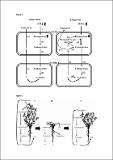Por favor, use este identificador para citar o enlazar a este item:
http://hdl.handle.net/10261/51488COMPARTIR / EXPORTAR:
 SHARE SHARE
 CORE
BASE CORE
BASE
|
|
| Visualizar otros formatos: MARC | Dublin Core | RDF | ORE | MODS | METS | DIDL | DATACITE | |

| Campo DC | Valor | Lengua/Idioma |
|---|---|---|
| dc.contributor.author | Erice, Gorka | - |
| dc.contributor.author | Sanz-Sáez, Álvaro | - |
| dc.contributor.author | Aranjuelo, Iker | - |
| dc.contributor.author | Irigoyen, Juan José | - |
| dc.contributor.author | Aguirreolea, Jone | - |
| dc.contributor.author | Avice, Jean Christophe | - |
| dc.contributor.author | Sánchez-Díaz, Manuel | - |
| dc.date.accessioned | 2012-06-13T12:06:08Z | - |
| dc.date.available | 2012-06-13T12:06:08Z | - |
| dc.date.issued | 2011 | - |
| dc.identifier | doi: 10.1016/j.jplph.2011.07.007 | - |
| dc.identifier | issn: 0176-1617 | - |
| dc.identifier | e-issn: 1618-1328 | - |
| dc.identifier.citation | Journal of Plant Physiology 168(17): 2007-2014 (2011) | - |
| dc.identifier.uri | http://hdl.handle.net/10261/51488 | - |
| dc.description.abstract | Future climatic conditions, including rising atmospheric CO2 and temperature may increase photosynthesis and, consequently, plant production. A larger knowledge of legume performance under the predicted growth conditions will be crucial for safeguarding crop management and extending the area under cultivation with these plants in the near future. N2 fixation is a key process conditioning plant responsiveness to varying growth conditions. Moreover, it is likely to increase under future environments, due to the higher photosynthate availability, as a consequence of the higher growth rate under elevated CO2. However, as described in the literature, photosynthesis performance is frequently down-regulated (acclimated) under long-term exposure to CO2, especially when affected by stressful temperature and water availability conditions. As growth responses to elevated CO2 are dependent on sink-source status, it is generally accepted that down-regulation occurs in situations with insufficient plant C sink capacity. Alfalfa management involves the cutting of shoots, which alters the source-sink relationship and thus the photosynthetic behaviour. As the growth rate decreases at the end of the pre-cut vegetative growth period, nodulated alfalfa plants show photosynthetic down-regulation, but during regrowth following defoliation, acclimation to elevated CO2 disappears. The shoot harvest also leads to a drop in mineral N uptake and C translocation to the roots, resulting in a reduction in N2 fixation due to the dependence on photosynthate supply to support nodule function. Therefore, the production of new shoots during the first days following cutting requires the utilization of reduced C and N compounds that have been stored previously in reserve organs. The stored reserves are mediated by phytohormones such as methyl jasmonate and abscisic acid and in situations where water stress reduces shoot production this potentially enables the enhancement of taproot protein levels in nodulated alfalfa, which may lead to these plants being in better condition in the following cut/regrowth cycle. Furthering our knowledge of legume performance under predicted climate change conditions will be crucial for the development of varieties with better adaptation that will achieve greater and more efficient production values. Furthermore, for this purpose it will be necessary to improve existing methodologies and create new ones for phenotype characterization. Such knowledge will provide key information for future plant breeding programs. © 2011 Elsevier GmbH. | - |
| dc.description.sponsorship | This work was supported by Ministerio de Ciencia e Innovación (MICINN BFU2008-01405), Fundación Universitaria de Navarra (PIUNA-2008) and Fundación Caja Navarra. | - |
| dc.language.iso | eng | - |
| dc.publisher | Elsevier | - |
| dc.rights | openAccess | - |
| dc.title | Photosynthesis, N2 fixation and taproot reserves during the cutting regrowth cycle of alfalfa under elevated CO2 and temperature | - |
| dc.type | artículo | - |
| dc.identifier.doi | 10.1016/j.jplph.2011.07.007 | - |
| dc.date.updated | 2012-06-13T12:06:08Z | - |
| dc.description.version | Peer Reviewed | - |
| dc.contributor.funder | Ministerio de Ciencia e Innovación (España) | - |
| dc.contributor.funder | Fundación Universitaria de Navarra | - |
| dc.contributor.funder | Fundación Caja Navarra | - |
| dc.identifier.funder | http://dx.doi.org/10.13039/501100004837 | es_ES |
| dc.identifier.funder | http://dx.doi.org/10.13039/501100006671 | es_ES |
| dc.identifier.funder | http://dx.doi.org/10.13039/501100010293 | es_ES |
| dc.type.coar | http://purl.org/coar/resource_type/c_6501 | es_ES |
| item.openairetype | artículo | - |
| item.grantfulltext | open | - |
| item.cerifentitytype | Publications | - |
| item.openairecristype | http://purl.org/coar/resource_type/c_18cf | - |
| item.fulltext | With Fulltext | - |
| item.languageiso639-1 | en | - |
| Aparece en las colecciones: | (EEAD) Artículos (ICVV) Artículos (IDAB) Artículos | |
Ficheros en este ítem:
| Fichero | Descripción | Tamaño | Formato | |
|---|---|---|---|---|
| Photosynthesis, N2 fixation and taproot reserves during.pdf | 124,27 kB | Adobe PDF |  Visualizar/Abrir | |
| Figuras.pdf | Figuras | 283,59 kB | Adobe PDF |  Visualizar/Abrir |
CORE Recommender
SCOPUSTM
Citations
38
checked on 12-abr-2024
WEB OF SCIENCETM
Citations
28
checked on 26-feb-2024
Page view(s)
404
checked on 22-abr-2024
Download(s)
594
checked on 22-abr-2024
Google ScholarTM
Check
Altmetric
Altmetric
NOTA: Los ítems de Digital.CSIC están protegidos por copyright, con todos los derechos reservados, a menos que se indique lo contrario.
